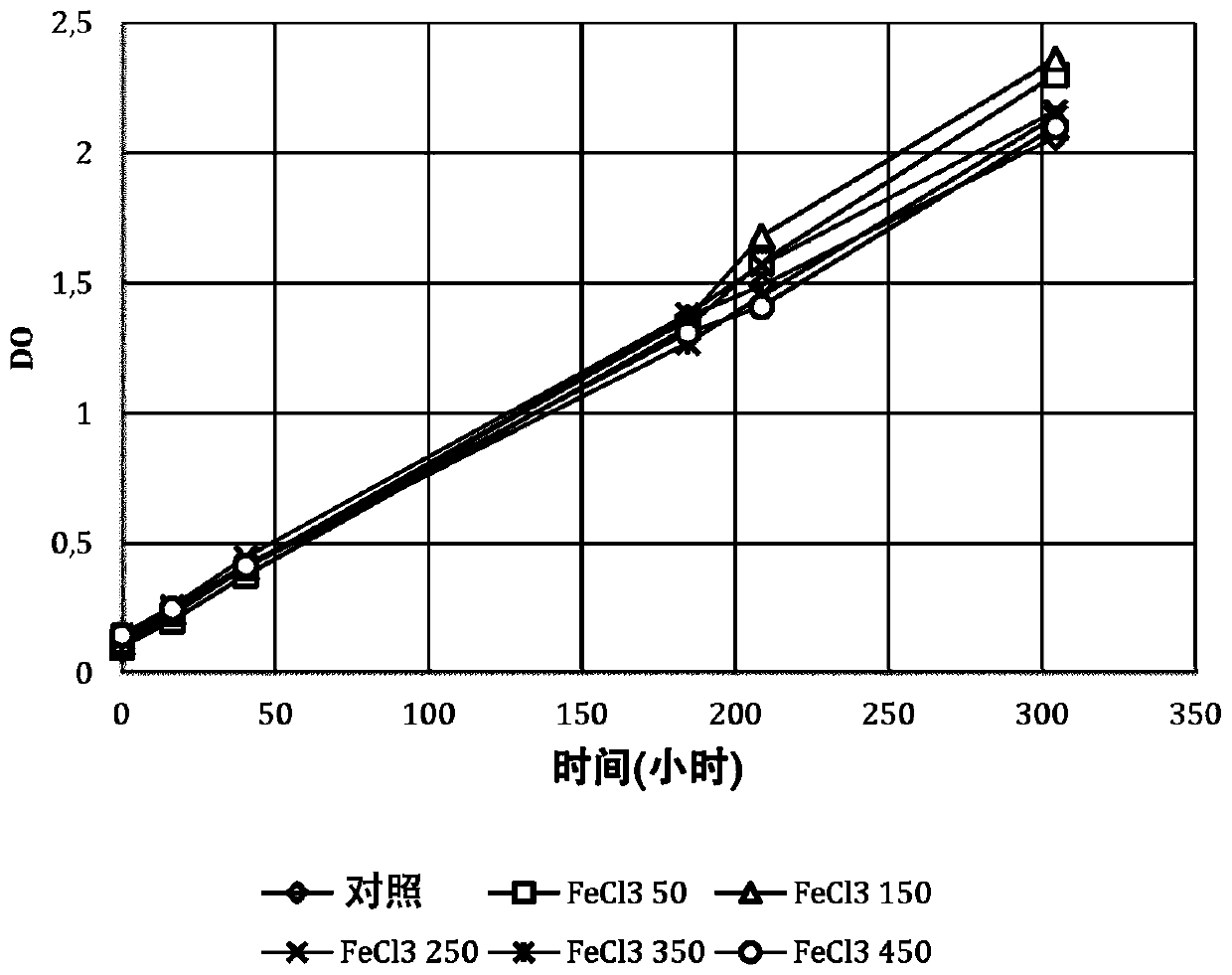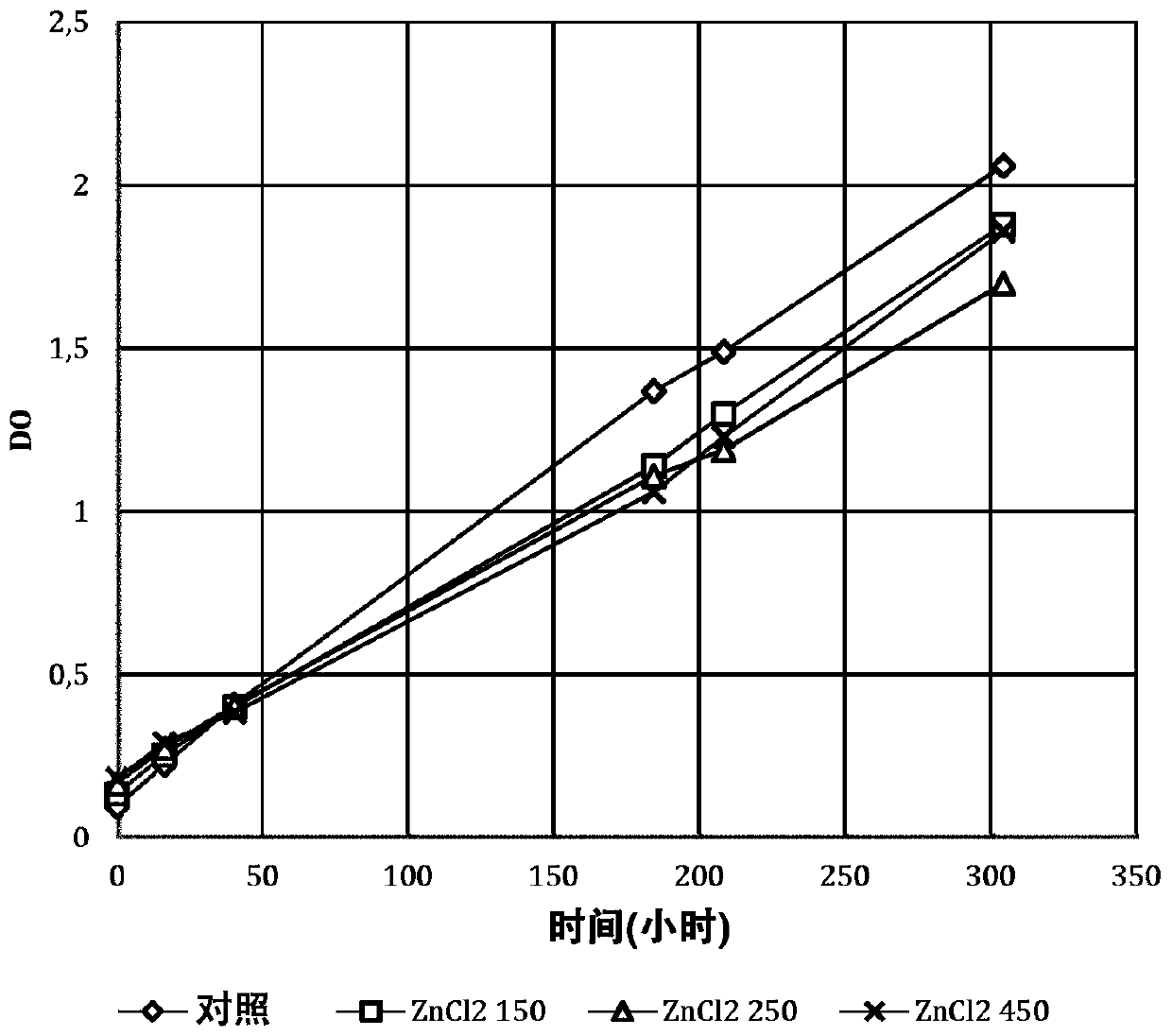Anti-adhesion culture medium
A culture medium and microbial technology, applied in the field of cultivating microorganisms, can solve problems such as unfavorable growth, release of products, and rapid development of biofilms
- Summary
- Abstract
- Description
- Claims
- Application Information
AI Technical Summary
Problems solved by technology
Method used
Image
Examples
Embodiment
[0064] Two microalgae cultures were performed, one control without flocculant and one with flocculant FeCl 3 .
[0065] Materials and methods
[0066] microalgae
[0067] The microalgae used in this example were from the species Chlorella sorokiniana.
[0068] culture medium
[0069] BG-11 growth medium (UTEX) was used.
[0070] Culture conditions
[0071] Inoculate the column with 0.5 g / L microalgae. The temperature was kept constant at 30°C. Brightness set to 500μEinstein / m 2 / s. Up to 160 hours (control) and 189 hours (FeCl 3 ), the pH stabilized at 6.3, then without adjustment, the pH was raised to 8 to stabilize at that level until the end of the experiment. It was chosen not to adjust the pH further because high pH increases the ability of microalgae to adhere to the wall.
[0072] Biomass recycling
PUM
 Login to View More
Login to View More Abstract
Description
Claims
Application Information
 Login to View More
Login to View More - R&D Engineer
- R&D Manager
- IP Professional
- Industry Leading Data Capabilities
- Powerful AI technology
- Patent DNA Extraction
Browse by: Latest US Patents, China's latest patents, Technical Efficacy Thesaurus, Application Domain, Technology Topic, Popular Technical Reports.
© 2024 PatSnap. All rights reserved.Legal|Privacy policy|Modern Slavery Act Transparency Statement|Sitemap|About US| Contact US: help@patsnap.com










